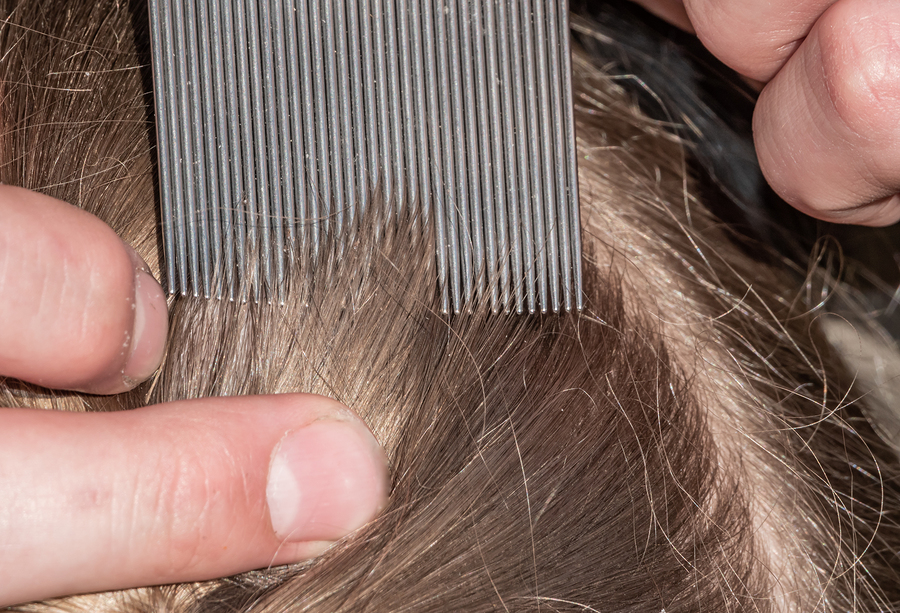Advice on Lice!!!
Head lice are tiny insects that live on the scalp. They can be spread by close contact with other people. These lice only live in hair and occasionally eyebrows and eyelashes.
Head lice infect hair on the head. They are easiest to see on the neck and over the ears. Tiny eggs on the hair look like flakes of dandruff. However, instead of flaking off the scalp, they stay put.
You should know…
- Head lice can survive up to 30 days on a human.
- Their eggs can live for more than 2 weeks.
- Head lice spread easily.
- You can get head lice when you come in close contact with a person who has lice, or by touching their clothing or bedding.
- Head lice are more common in close, overcrowded living conditions. Lice spread easily among school children.
- Having head lice does NOT mean the person has poor hygiene or low social status.
- Having head lice causes intense itching, but does not lead to serious medical problems.
- Unlike body lice, head lice never carry or spread diseases.
Symptoms include intense itching of the scalp, small red bumps on the scalp, neck, and shoulders (bumps may become crusty and ooze), tiny white specks (eggs, or nits) on the bottom of each hair that are hard to get off.
To see head lice, you need to look closely. Use disposable gloves and look at the person’s head under a bright light. Full sun or the brightest lights in your home during daylight hours work well. A magnifying glass can also help. Part the hair all the way down to the scalp in very small sections, looking both for moving lice and eggs (nits).
Look at the entire head this way. Look closely around the top of the neck and ears, the most common locations for eggs. Treatment is recommended if even one egg is found. Treatment Lotions and shampoos containing 1% Permethrin (Nix®) often work well. They can be bought at the store without a prescription. If these do not work, a doctor can give you a prescription for stronger medicine. Such medicine should be used exactly as directed.
To use the medicine shampoo:
- Rinse and dry the hair.
- Apply the medicine to the hair and scalp.
- After 10 minutes, rinse it off.
- Remove the nits with a nit comb by taking small sections of hair and carefully running the comb through.
- Check for lice and nits again every day for 2 weeks and repeat the treatment in two weeks if necessary.
An important part of treatment is removing the eggs (nits):
- You can remove the eggs with a nit comb. Before doing this, rub olive oil in the hair or run the metal comb through beeswax. This makes the nits easier to remove.
- Metal combs with very fine teeth are stronger and more effective than plastic nit combs. These metal combs are easy to find in pet stores or on the internet.
- Removing eggs may prevent the lice from returning if the medication fails to kill every one of them.
- Wash all clothes and bed linens in hot water with detergent. This also helps prevent head lice from spreading to others during the short period when head lice can survive off the human body.
- Repeat combing for nits in 7-10 days. Treatment can cause significant side effects in children younger than 6 months old, the elderly, and anyone weighing less than 110 lbs (50 kg), especially when the treatment is used repeatedly in a short period of time. Prognosis Lice are usually killed with proper treatment. However, lice may come back, especially if the source is not corrected. For example, a classroom with many infected children can cause kids to repeatedly get lice.
- When one case is detected in a family, school or child-care center, every child at that location should be examined for head lice. This can prevent further spreading.
Prevention
- Never share hair brushes, combs, hair pieces, hats, bedding, towels, or clothing with someone who has head lice.
- Sometimes, the insects or their eggs get into areas such as carpets. Frequent cleaning of carpets and all other surfaces in child-care centers prevents spread of all types of infections, including head lice.
- If your child has lice, be sure to check the policy at your school/daycare. Many do not allow infected children to be at school until the lice have been treated.
If you are unable to remove the lice on your own, community resources are available to you. We recommend:
- Potomac Lice Lady- Potomac- (240) 390-6487
- Advice on Lice- Kensington- (240)242-4267



